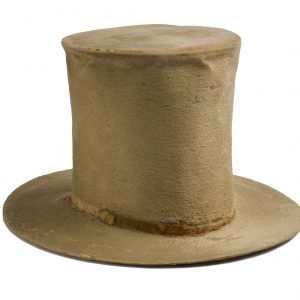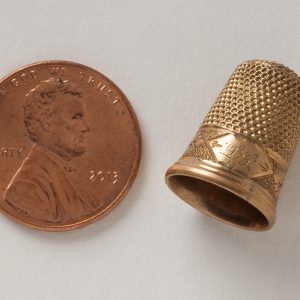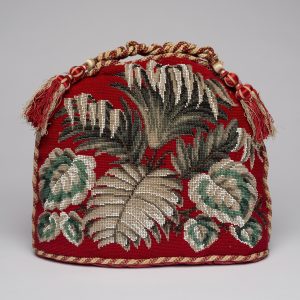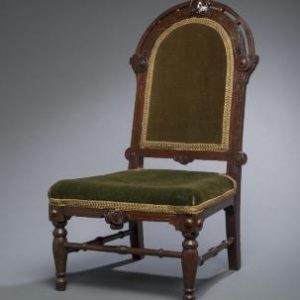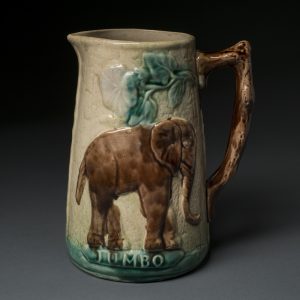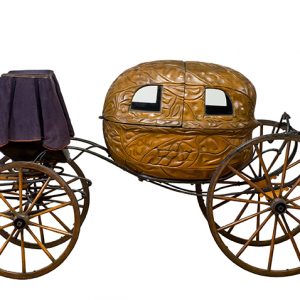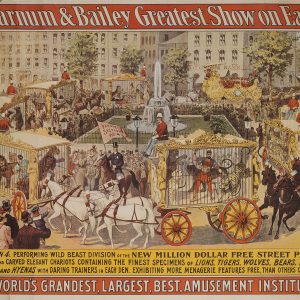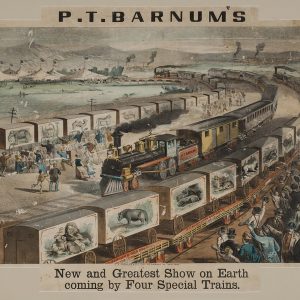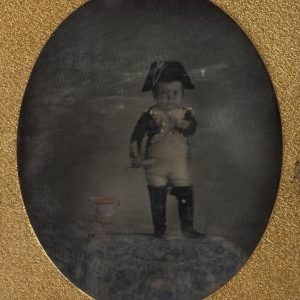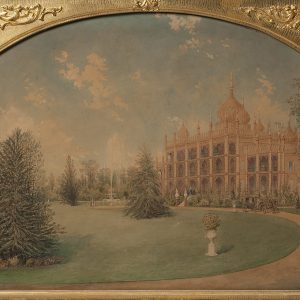The Barnum Museum’s collection is astonishingly diverse! It contains thousands of artifacts as well as an archive of manuscripts and photographs. It is rich with curious and one-of-a-kind items, many pertaining to P. T. Barnum and his famous associates, including “General Tom Thumb,” Swedish soprano Jenny Lind, and the beloved African elephant, Jumbo. We even have a centaur skeleton—yes, we do–and a replica of Barnum’s FeJee Mermaid! Enjoy the stories of artifacts in our behind-the-scenes video series, Curious People Wanted, led by the Museum’s Curator and available on the Barnum Museum YouTube channel.
Our collection of Barnum’s personal and family items includes elaborate furniture, household items, artwork, clothing, and books that reveal his taste, interests, and achievements. Our “Highlights” section features a few of these extraordinary Barnum-related artifacts!
In addition to our P. T. Barnum holdings, many items from early days of The Barnum Institute of Science and History have remained in the collection, including a 4000-year-old Egyptian mummy, early tools and ceremonial items from cultures around the world, American colonial-era and Civil War artifacts, and biological specimens. Bridgeport’s early industries are also represented in the collection.
We are grateful for support from the National Endowment for the Humanities. Grant funding from NEH allowed us to have hundreds of items in our collection professionally photographed so that you, too, can enjoy them!
New Digital Exhibit: The Widow, The Priest, and the Mummy
The Barnum Museum presents its first ever all-digital museum exhibit, The Widow, The Priest, and the Mummy, a story whose origins date back some two thousand years. Follow this gripping tale at your own pace, watch educational videos hosted by a range of experts, and explore interactive pages that invite you to ‘Dig Deeper’ into the past. Parents and teachers are invited to download our free Educator Guide for a variety of additional educational activities.
New video series: Discovering Ipy's Mummy with the Barnum Museum:
Fascinated by ancient Egypt? Check out the amazing things we’ve learned from experts about “Ipy’s mummy” and the coffin of Pa-en-bes, which came to the museum in 1894. Imagine being able to see the likeness of a young woman who lived 4000 years ago! Curious about hieroglyphs? Join the Museum’s learning journey in this 30-minute overview, Uncovering the Secrets of an Egyptian Mummy and Coffin. Plus, you can hear more from the experts, visit a forensic sculpture class, and view a timelapse of the facial reconstruction among the dozen videos in our project series on our YouTube channel. Project support provided by CT Humanities.
Listen to podcasts on Becoming Barnum: The Journey to Fame and Fortune:
Our professionally-narrated podcast series brings to life P. T. Barnum’s letters from 1845-1846, and is based on our blog series, Barnum’s Letters from Abroad. You can find it here or wherever you get your podcasts.
View the Barnum Museum Collection in the CT Digital Archive:
The Barnum Museum Digital Collection contains a range of material spanning a timeframe from ancient Egypt to the early 1900s. While the majority of the objects, artwork, and documents pertain to P. T. Barnum and date to the 1800s, the collection also includes anthropological items that belonged to the Bridgeport Scientific Society, the Museum’s predecessor. Of particular note are images and videos about the mummified remains of an ancient Egyptian woman. This collection will expand to other categories as time and resources allow.
View the P.T. Barnum Digital Collection in the CT Digital Archive:
The P. T. Barnum Digital Collection brings together the P. T. Barnum-related items of the Barnum Museum and the Bridgeport History Center/Bridgeport Public Library, forming one comprehensive research resource. Included are many types of artifacts such as clothing, furniture, carriages, posters, and souvenirs, and archival items such as letters, documents, and photographs. (All items owned by the Barnum Museum are also included in the collection above.)
Barnum's Letters from Abroad: A Blog Series Based on P. T. Barnum's 1845-1846 Copybook:
Discover the curious, funny, and sometimes sobering stories of P. T. Barnum and Gen. Tom Thumb’s first journey through Europe in this award-winning 75-part series written by the Museum’s Curator. Barnum’s own words illuminate the stories, as readers are led through hundreds of fascinating letters that reveal his character, as well as his ambitions, disappointments, and moments of triumph.
Revisit the live opening of the Barnum Museum’s secret samurai box!
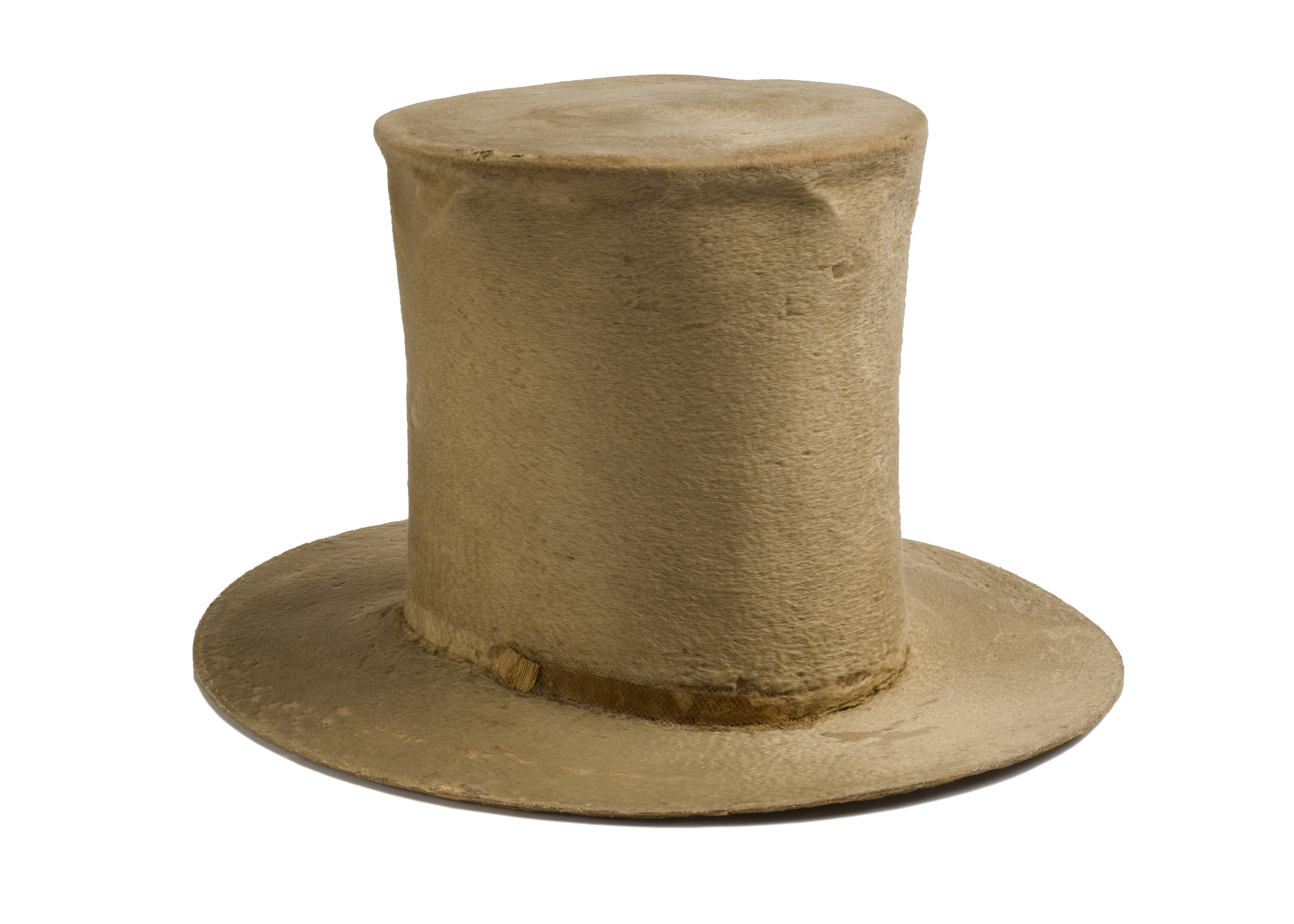
P. T. Barnum’s Top Hat
P. T. Barnum’s top hat dates to about 1830, when he was a young man, newly married. Handmade in Hartford, Connecticut, the hat is made of felted rabbit fur and is 13 inches tall.
***Top Hat History and Kids Activity***
Photo Credit: Paul Mutino
Jumbo
Watch the video, “The Glory That Was Jumbo” from Tufts University.
Photo Credit: Tufts University
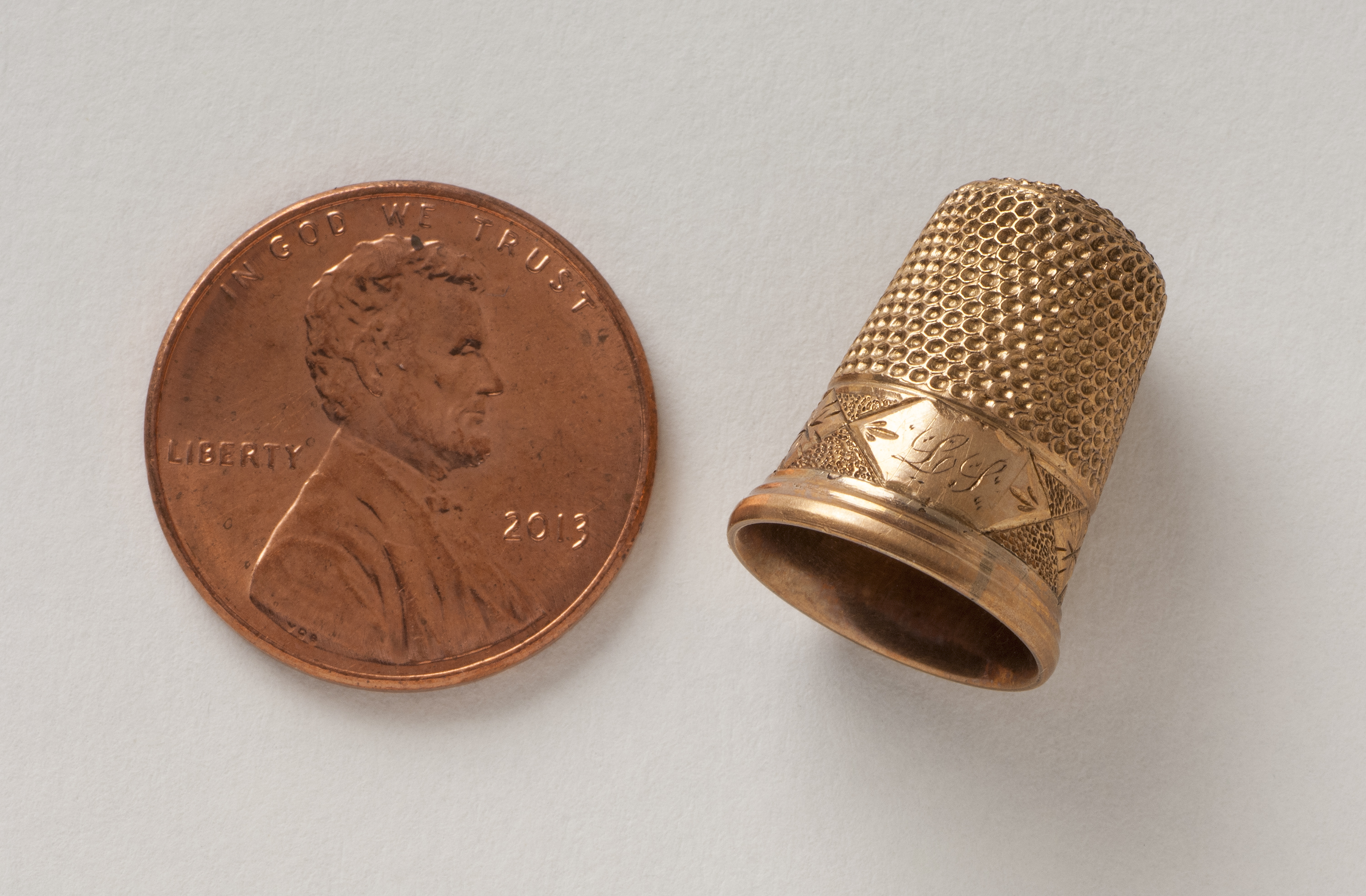
Tiny Thimble
In bygone eras, virtually every young woman learned to sew, and little person Lavinia Warren, born in Middleborough, Massachusetts, in 1841, was no exception. Here you see her tiny, rose-gold thimble placed next to a one-cent coin to show the diminuative scale. Look closely and you will see the initials “LS” for Lavinia Stratton, her married name. Lavinia’s husband, Charles S. Stratton, was made famous by P. T. Barnum under the stage name “General Tom Thumb,” and she as “Mrs. General Tom Thumb.”
Photo Credit: Paul Mutino

Barnum Tea Cozy
This bright red needlework tea cozy with its intricately beaded leaves looks almost new, its color is so rich! Tea cozies were thick covers, usually padded or quilted, designed to insulate teapots and keep the tea warm. Today that might seem “over the top,” but remember that before the days of central heating, houses could be cold and drafty. This tea cozy was used in the Barnum household, and may have been a gift from one of Barnum’s many English business associates, or possibly from his second wife, who was English.
***Kids Activity***
Photo Credit: Paul Mutino

Tom Thumb's Miniature Chair
This miniature chair belonged to “General Tom Thumb,” a little person performer who was “discovered” in Bridgeport, Connecticut, by P. T. Barnum in 1842. Charlie (Charles S. Stratton was his real name) was just two feet tall and about 15 pounds at age 5. Bright and engaging, he had an aptitude for acting, and crowds thronged to get a glimpse of the “Man in Miniature,” as Barnum promoted him. This little chair was probably made for use on stage; chairs in the same style are shown in popular prints that feature Tom Thumb in his various performance characters.
***Kids’ Activity***
Photo Credit: Paul Mutino

Jumbo Pitcher
Jumbo, depicted here on a Majolicaware pitcher, became the first internationally famous animal celebrity. He was an African elephant, captured when he was just a young calf. First sent to the Jardin des Plantes in Paris, he was later traded to the London Zoo where he became the “darling” of the English public, giving rides to children. Barnum acquired him in 1882, bringing him to America where his fame spread far and wide. Many household items and souvenirs were made with his image, and companies advertised their products by implying their strength was equal to the elephant’s. Today all kinds of super large items from eggs to jet planes carry his name, an ongoing reference to his exceptional size (about 11 ½ feet tall).
***Kids’ Activity***
Photo Credit: Paul Mutino
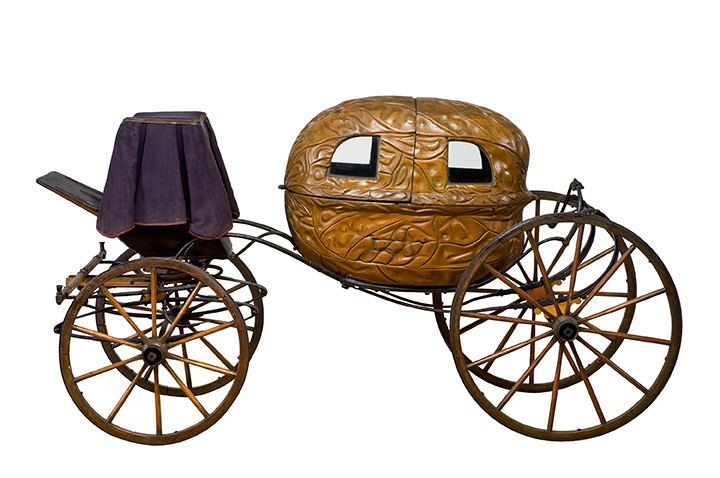
Commodore Nutt Carriage
Is this really a walnut-shaped carriage? Yes, indeed, and something you won’t see anywhere else! This show carriage, dating to the 1860s, was specially made for George Washington Morrison Nutt, a little person who was one of Barnum’s star performers at the American Museum in New York City. His stage name was “Commodore Nutt.” Playing upon the young man’s last name, Barnum commissioned this one-of-a-kind, miniature sized carriage with blue satin upholstery as a novel way to promote the Commodore’s arrival at different venues.
Photo Credit: Paul Mutino

Jenny Lind Mirror
P. T. Barnum brought Swedish soprano Jenny Lind to America in 1850, and “primed the media pump” by promoting her arrival months in advance. Her popularity was so great that manufacturers named all kinds of products after her, and also made many products featuring her likeness, such as this cast iron looking glass. The two figures represent Miss Lind wearing the full, round skirts with three flounces (deep ruffles) that were in fashion at the time. Even though Jenny Lind was Swedish, American-made Jenny Lind souvenirs and products often include the American flag.
***Kids’ Activity***
Photo Credit: Paul Mutino

Performing Wild Beast Division Poster
This Barnum & Bailey poster from the late 1880s or early 1890s features the “Performing Wild Beast Division” of the Greatest Show on Earth. As the parade of “carved chariots” (circus wagons) circles a fenced park, crowds of onlookers gaze at the spectacle of tigers, panthers, wolves, leopards, and bears with their brave (or foolhardy) trainers also inside the wagons. Excitement builds!
Photo Credit: Paul Mutino
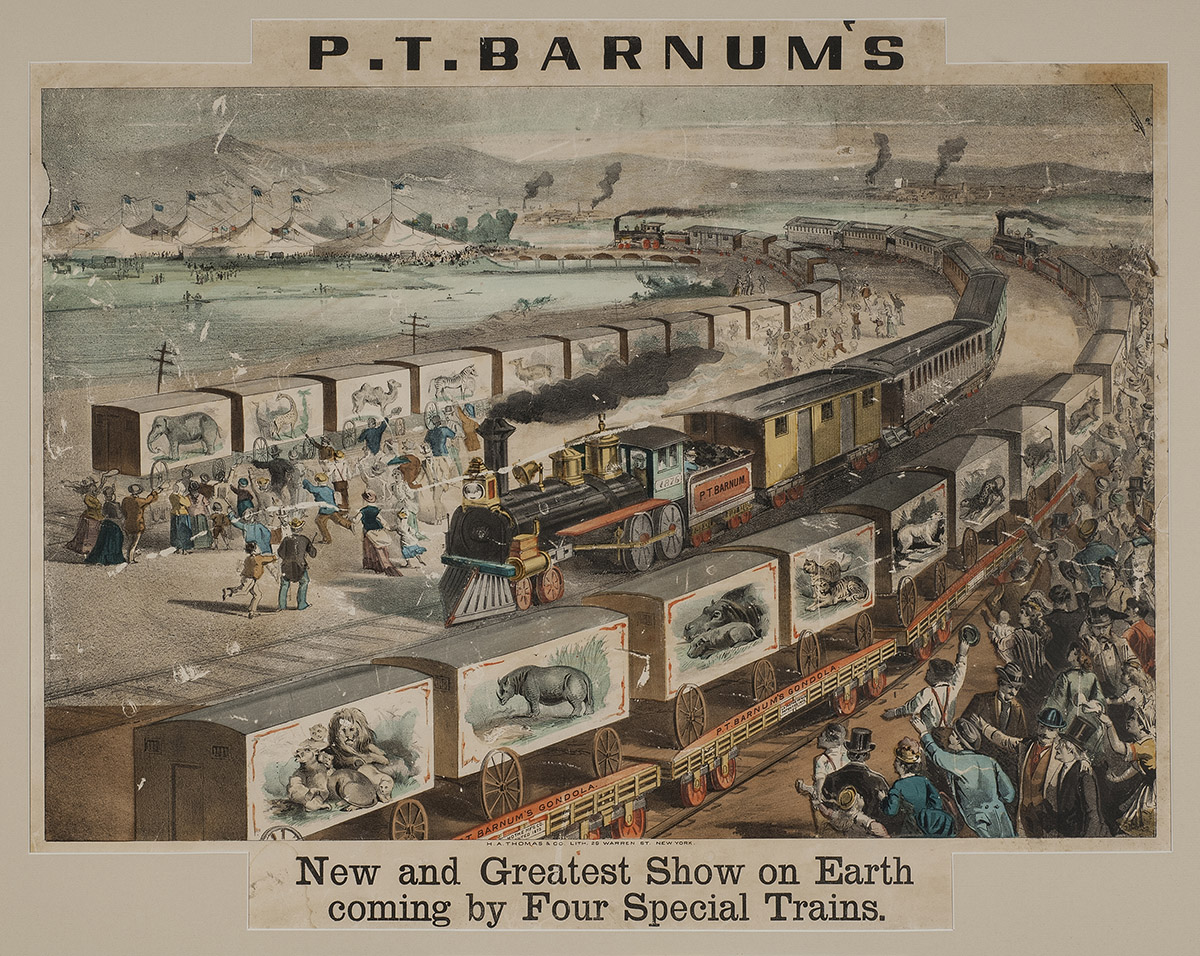
"Four Special Trains" Poster
Barnum’s involvement with the circus coincided with the major expansion of the railroad system in America. He capitalized on its many advantages to bring ever-larger shows to more and more Americans. This small but delightfully scenic poster, titled “Barnum’s Greatest Show on Earth Coming by Four Special Trains,” dates from about 1875-1876.
***Kids’ Activity 1***
***Kids’ Activity 2***
Photo Credit: Paul Mutino
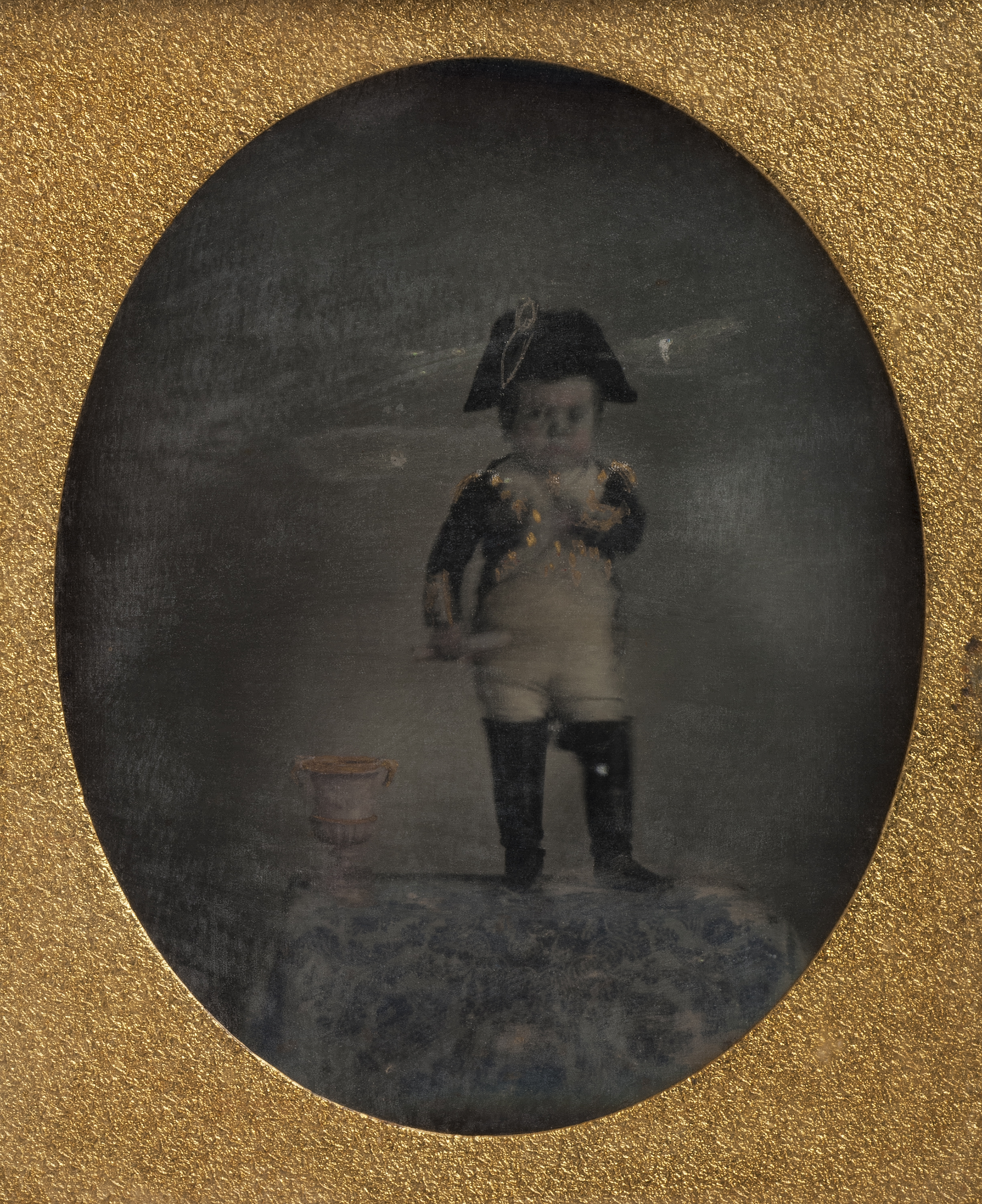
Tom Thumb Daguerreotype
This is a rare, early daguerreotype image of Charles S. Stratton, whose stage name was “General Tom Thumb.” He is shown posed in his Napoleon Bonaparte costume. His comical impersonation of the French military general and emperor was probably his most famous character role. This daguerreotype probably dates from the mid- to late 1840s, when Stratton was still a child.
Photo Credit: Paul Mutino

Barnum's first Bridgeport Mansion
This watercolor drawing of Barnum’s first Bridgeport mansion, Iranistan, is a rare view since no photographs are known to exist. Sadly, the exotic and lavishly decorated structure only lasted a decade; it burned to the ground in December of 1857. The landscaped surroundings featured a greenhouse, stables, a carriage house, and a building to pump water to the house, a remarkably early example of indoor plumbing.
***Kids’ Activity***
Photo Credit: Paul Mutino

Captain George Costentenus Poster
This poster-sized print showcases Barnum’s famous tattooed Greek, Captain George Costentenus, who performed in the Greatest Show on Earth in the 1870s. It was said that the 388 tattoos covering his entire body were a punishment inflicted when he was captured in Kashgar, but in reality he was a self-made curiosity.
Photo Credit: Paul Mutino

Tom Thumb & Lavinia's Wedding Cake
Imagine a slice of wedding cake that is more than 150 years old! This souvenir slice in its original box was among hundreds that were given out to guests attending the 1863 wedding reception for Mr. and Mrs. General Tom Thumb (Charles and Lavinia Stratton). Tradition held that the recipient was to eat the memento slice on the first anniversary. Being a rich, dense cake made with dried fruits well soaked in brandy, the alcohol prevented the cake from going moldy. Although this piece has lost all moisture and is now crystalized, the fact that it survived all these years is amazing!
Photo Credit: Paul Mutino
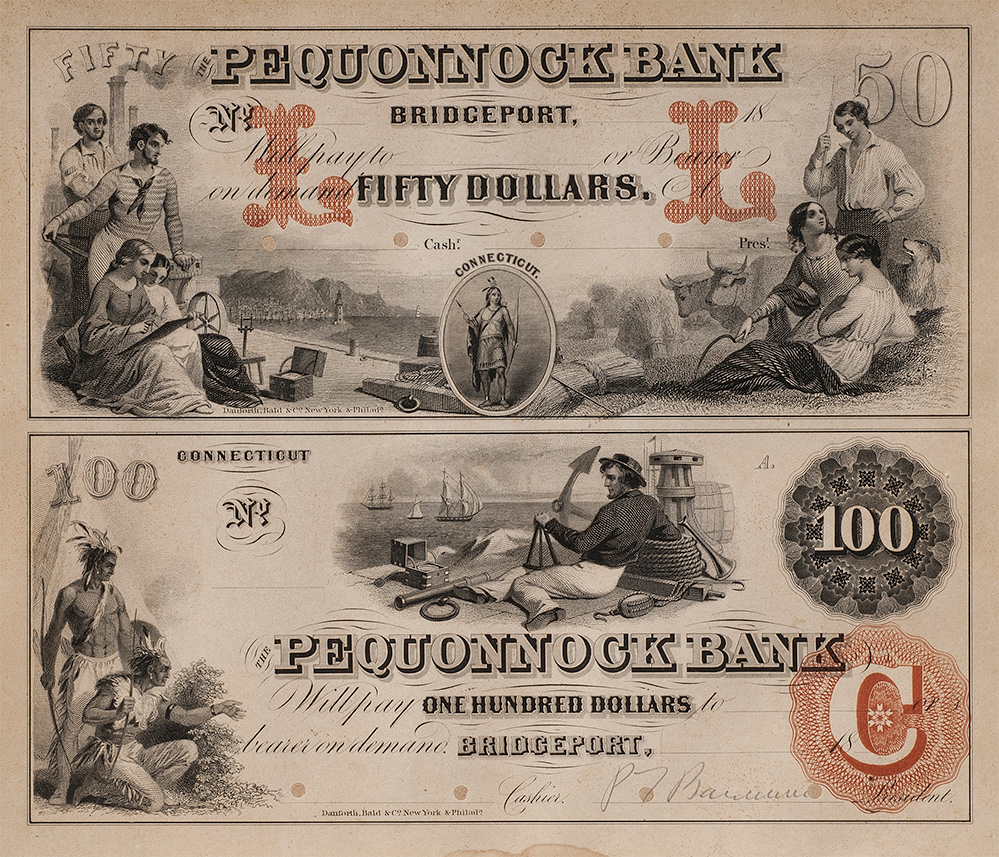
Pequonnock Banknotes
Two uncut banknotes from the Pequonnock Bank of Bridgeport, Connecticut, reveal the signature of the bank’s first President, P. T. Barnum. The engraved notes, featuring a variety of beautiful illustrations, date to the early 1850s, before there was a national currency. Prior to the passage of the National Bank Act of 1863, banks designed and printed their own banknotes.
Photo Credit: Paul Mutino
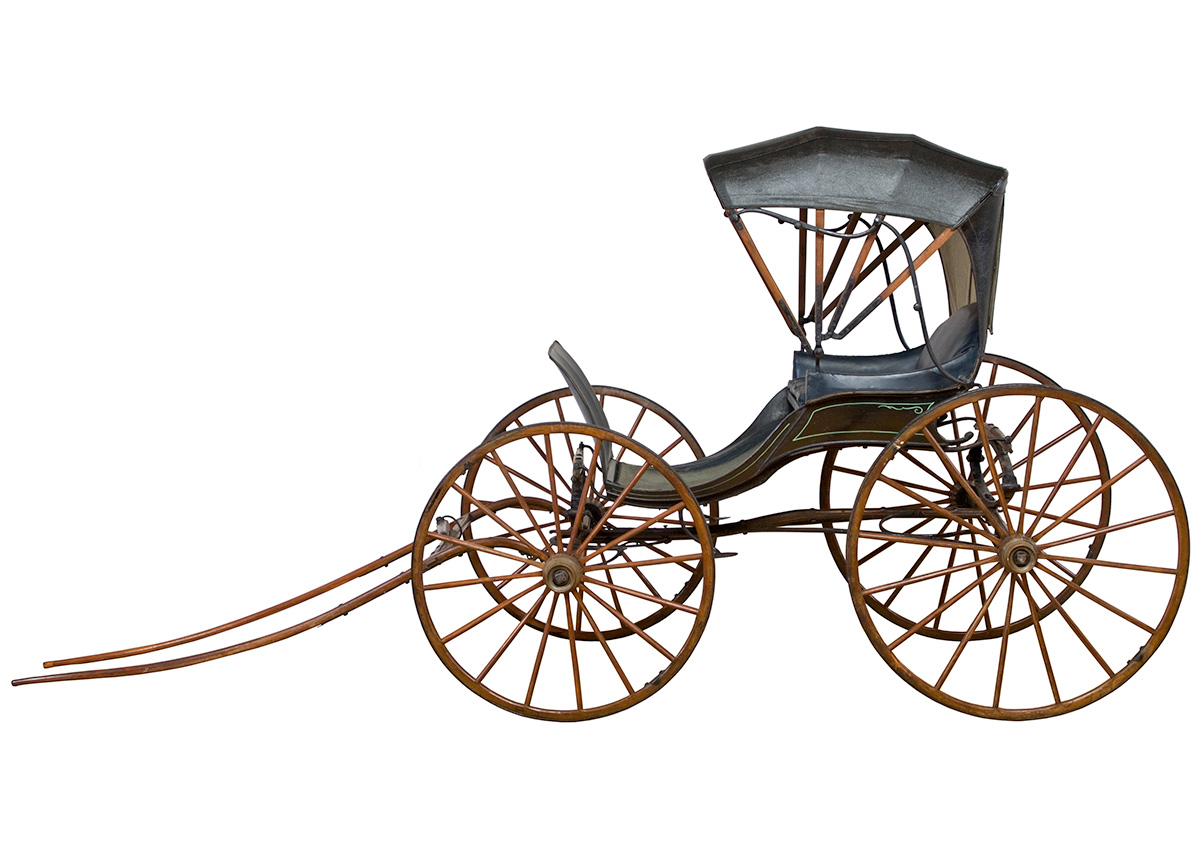
Pony Phaeton
Charles S. Stratton, known to the world as “General Tom Thumb,” acquired considerable wealth with his fame, and could easily afford to have carriages custom-made to suit his small stature. This two-seater, called a pony phaeton, was made in Bridgeport for “Charlie” and his equally petite wife, Lavinia, to use about town.
***Kids Activity***
Photo Credit: Paul Mutino
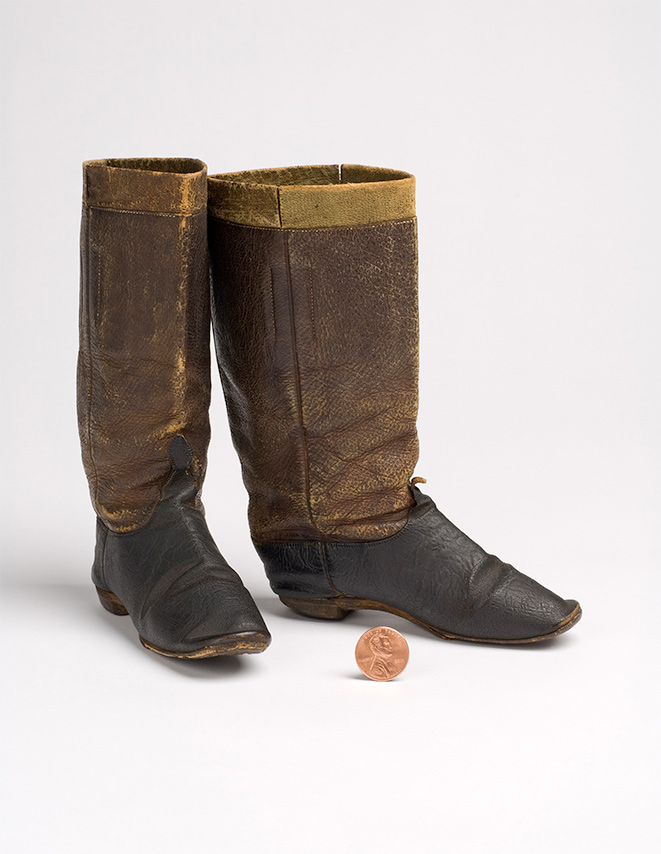
Tom Thumb's Leather Boots
These miniature leather boots belonged to “General Tom Thumb,” whose real name was Charles S. Stratton. They are shown with a U. S. one-cent coin for scale. Charles wore these boots when he was a child or youth, probably while on tour with P. T. Barnum in Europe in the 1840s. Footwear from his later years is somewhat larger, showing that he did grow slowly over the course of his life.
***Kids’ Activity***
Photo Credit: Paul Mutino
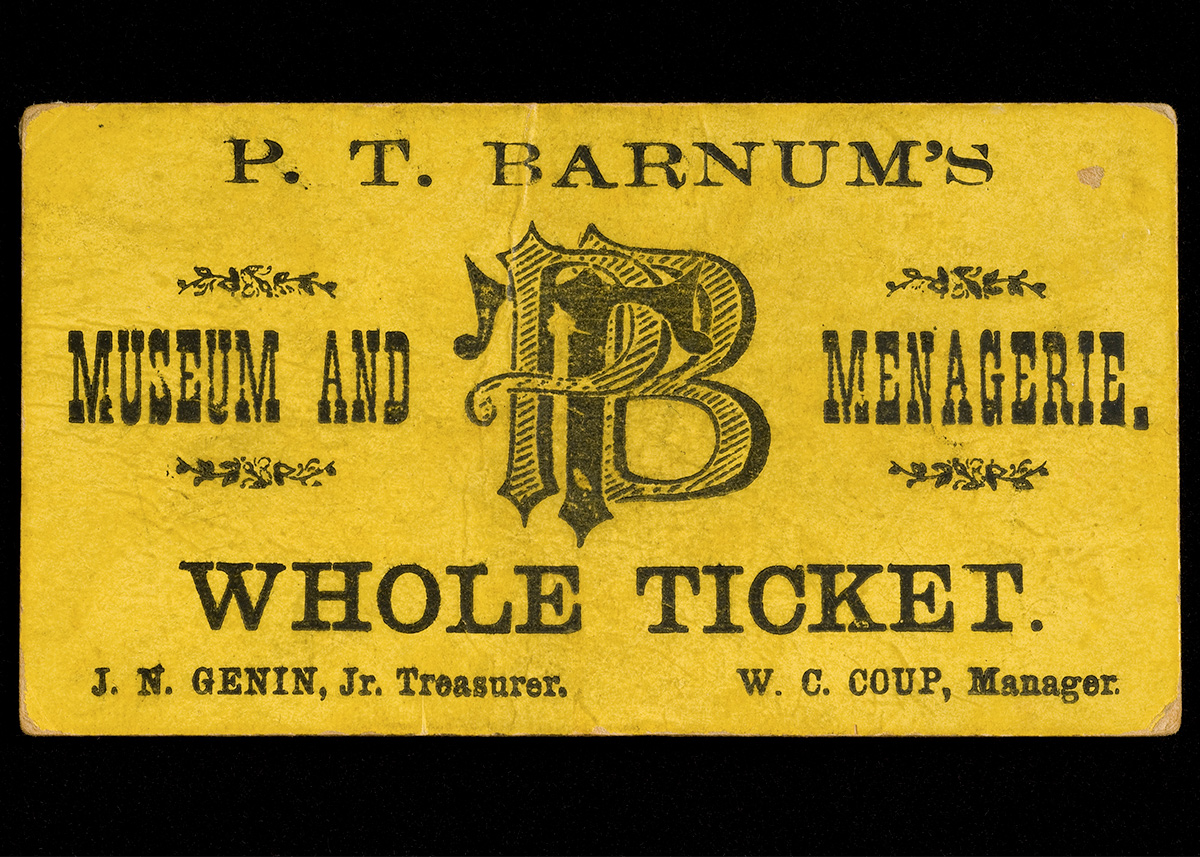
Yellow Ticket
This bright yellow ticket dates from the 1870s, the early years of Barnum’s circus enterprises, years before “Barnum & Bailey’s Greatest Show on Earth.”
Photo Credit: Paul Mutino
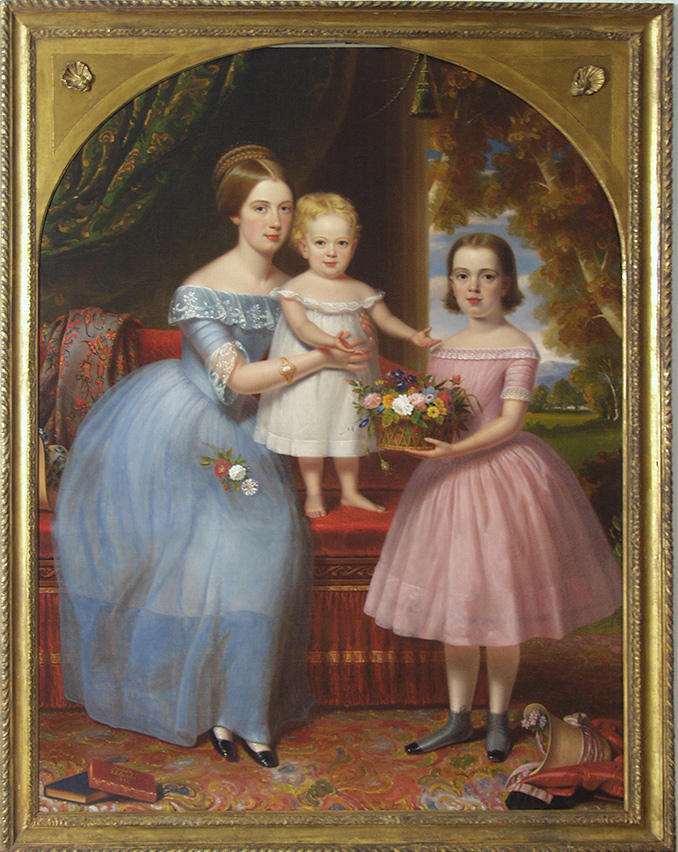
Family Painting
Barnum and his first wife Charity had four daughters, three of whom are shown in this handsome oil portrait by Frederick Spencer, dated 1847. The eldest is Caroline, in the blue dress, then Helen in the pink dress, and toddler Pauline in a white gown. This portrait was made right about the time the family was moving into their grand “oriental villa” mansion, Iranistan, the first of Barnum’s four homes in Bridgeport, Connecticut.
Photo Credit: Joseph Matteis
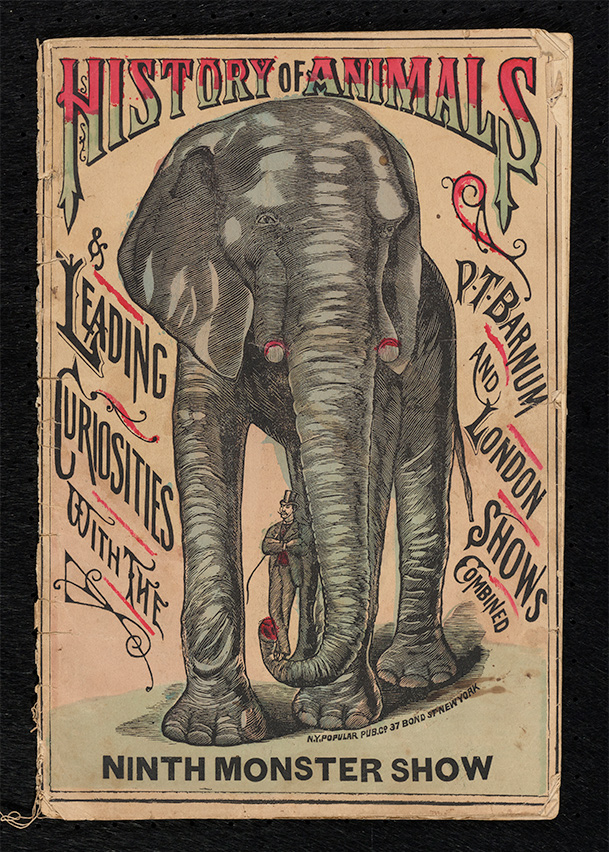
Souvenir Booklet
This souvenir booklet, History of Animals, features Jumbo, the famous African elephant, on its cover. His trainer, Matthew Scott, is barely visible due to Jumbo’s exaggerated size. The celebrity pachyderm was part of Barnum’s Greatest Show on Earth between 1882 and 1885, where this booklet would have been sold to circus-goers.
***Kids’ Activity***
Photo Credit: Northeast Document Conservation Center
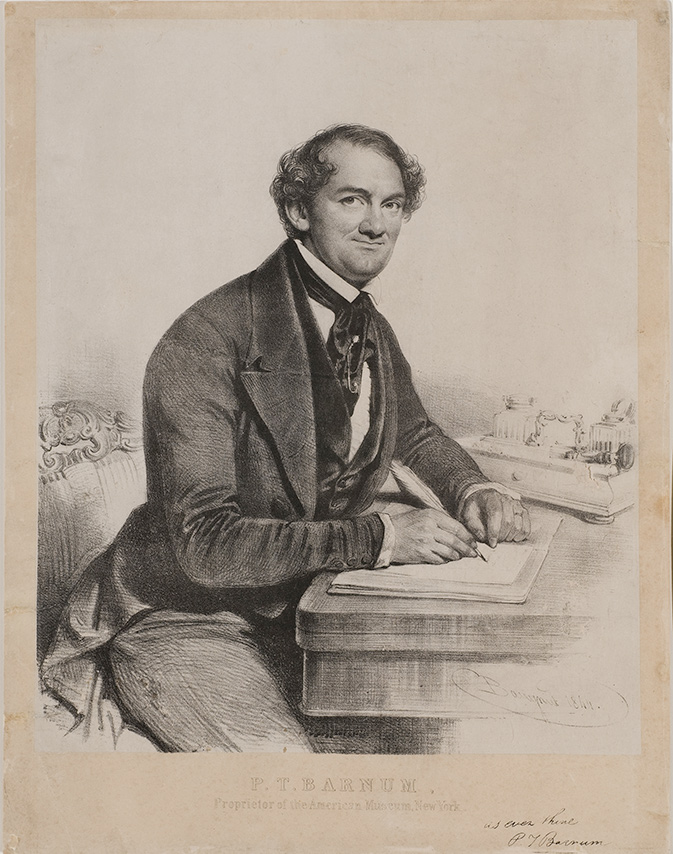
P.T. Barnum Portrait
Our earliest portrait of P. T. Barnum dates to 1844 and shows him at a desk with quill pen in hand. At the time Charles Baugniet made this portrait, Barnum was in his mid-thirties, his career beginning to blossom. He was in Europe touring with child performer and little person Charles S. Stratton, better known as “General Tom Thumb.” While traveling, Barnum wrote hundreds of letters to his business associates and to family members at home, and was also a foreign correspondent for a New York newspaper, The Atlas.
Photo Credit: Paul Mutino
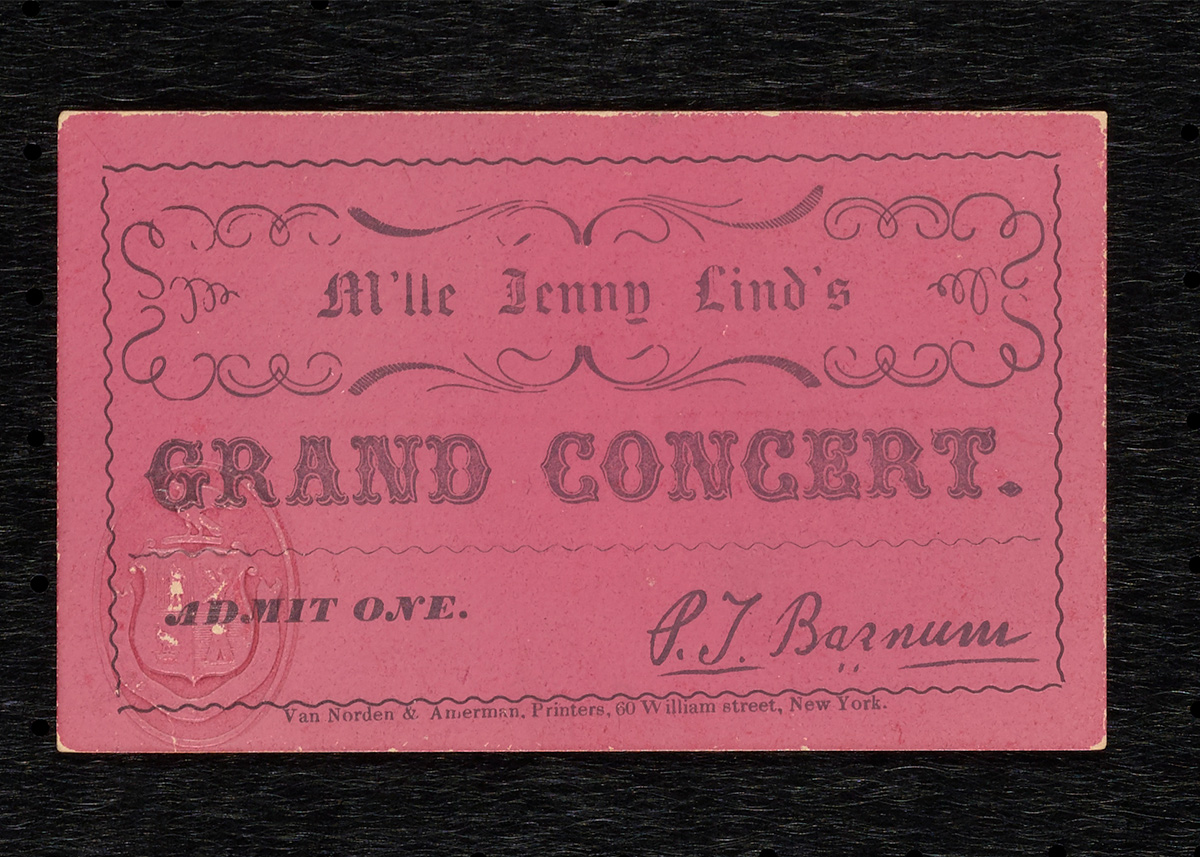
Ticket from a Jenny Lind Concert
This ticket from a Jenny Lind concert is red for a reason! The Swedish Nightingale’s popularity during her 1850-1851 American tour far surpassed P. T. Barnum’s expectations, and color coding the concert tickets helped to seat clamoring patrons more efficiently.
Photo Credit: Northeast Document Conservation Center
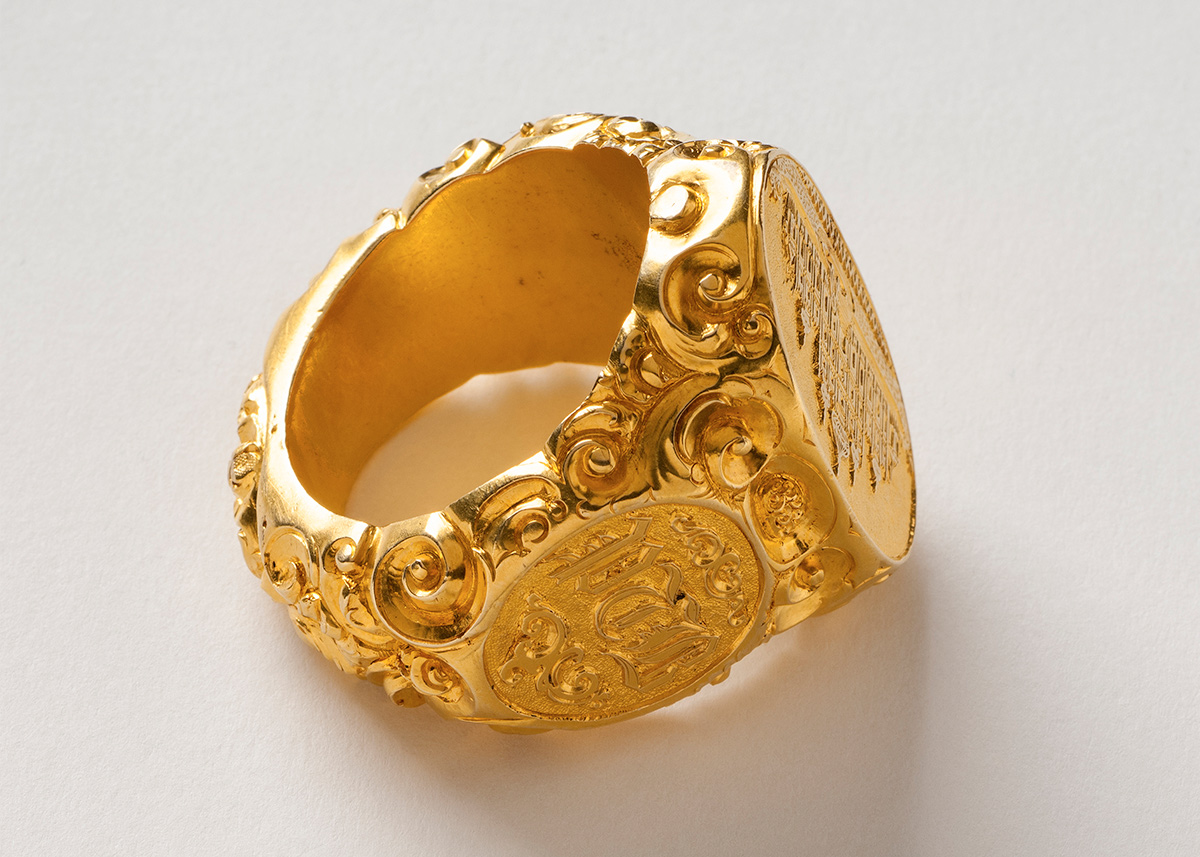
P. T. Barnum’s 18-karat Gold Ring
P.T. Barnum’s 18-karat gold ring features his beloved Bridgeport home, Iranistan, completed in 1848. Perhaps he acquired a nugget from the 1849 California Gold Rush to make this massive ring! (We don’t know for sure if that’s where it came from, but it’s the kind of thing Barnum would have done.)
***Kids’ Activity***
Photo Credit: Paul Mutino

Mrs. General Tom Thumb
“Mrs. General Tom Thumb,” whose real name was Lavinia Warren Stratton, is the beautiful little lady featured in this paper doll from the 1860s, which is part of a set. Her green “silk” gown is hand-colored.



